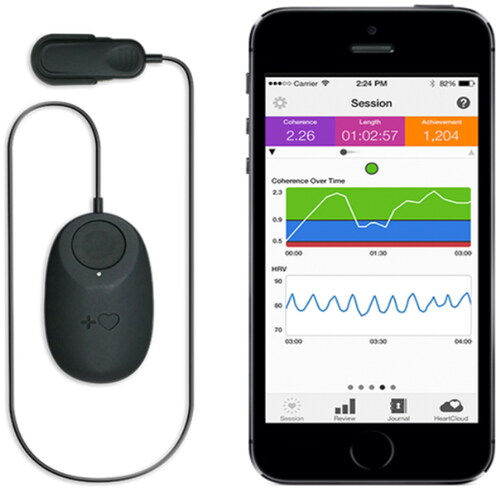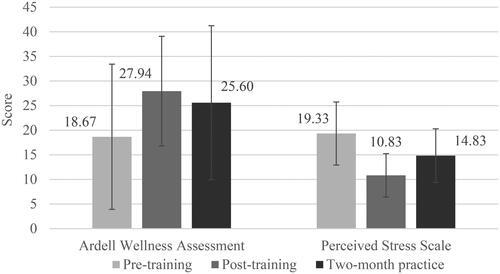Figures & data
Figure 1. The Inner Balance device is a state of the art, ultra-low Bluetooth device with 125 hz sample rate measuring HRV parameters to optimise accurate HRV and QCT training.

Table 1. Means and standard deviations of pilot’s AWSA and PSS scores among three stages of QCT training.
Table 2. Means and standard deviations of recorded sessions (N) of all participated pilots’ psychophysiological state between baseline and practicing QCT while off-duty (daily life) and on-duty (flight operations) for 2-months practice.
Figure 2. The differences of AWSA and PSS scores among three different stages on QCT pre-training, post-training and 2-month self-regulated practicing.

Figure 3. The interaction effect of self-regulated practicing QCT and flight duty on pilots’ psychophysiological coherence.

Table 3. Two-way ANOVA interactions, simple main effects, and main effects on pilots’ psychophysiological coherence between practicing QCT and flight duty.
Table 4. Summaries on pilots’ experiences shared while practicing QCT both on controlled reset in the flight deck and day-to-day life.
